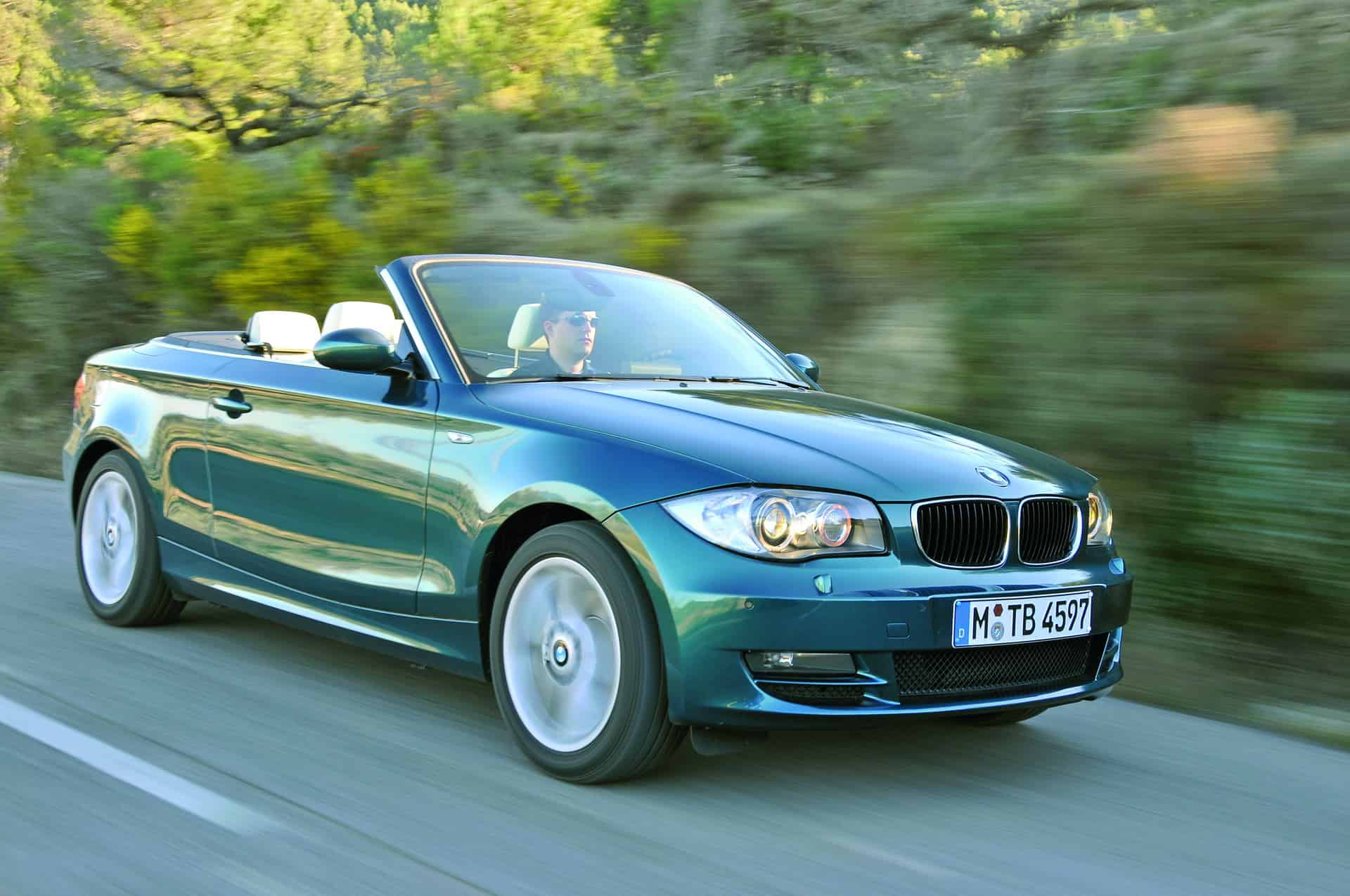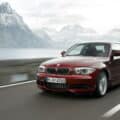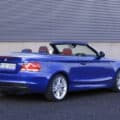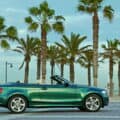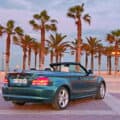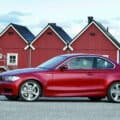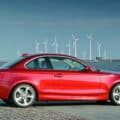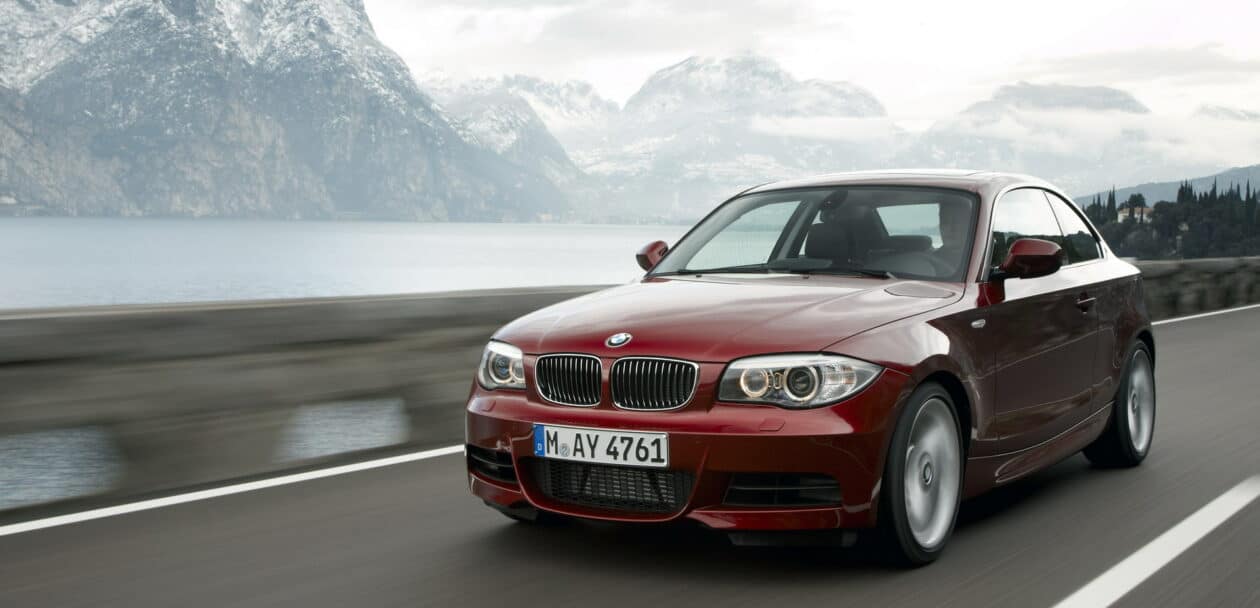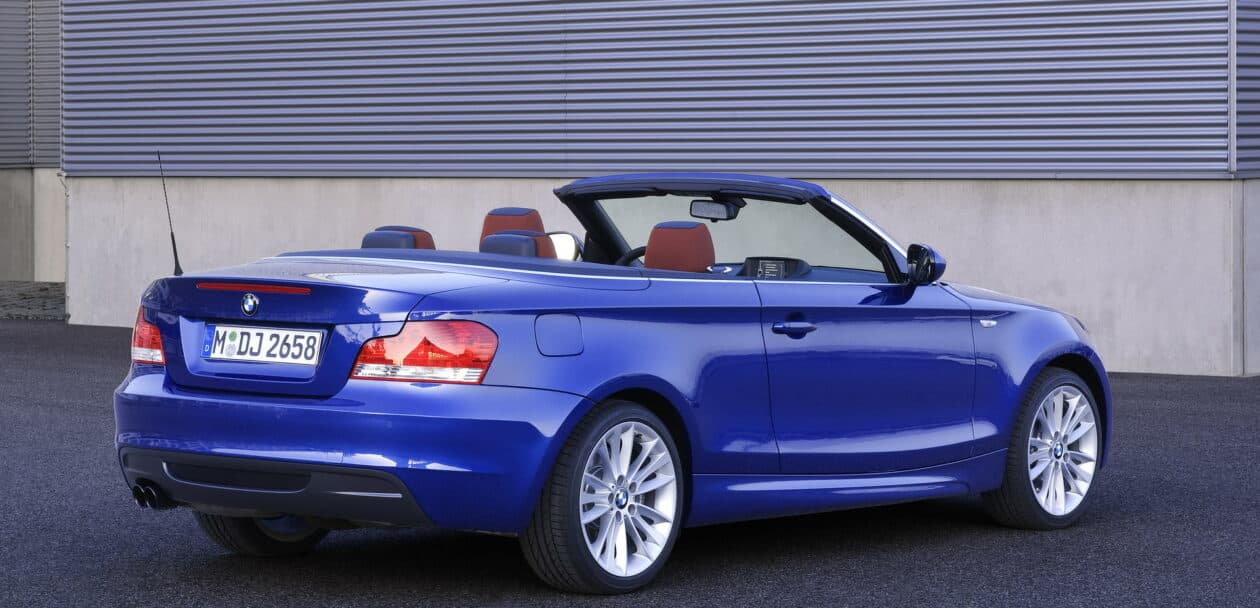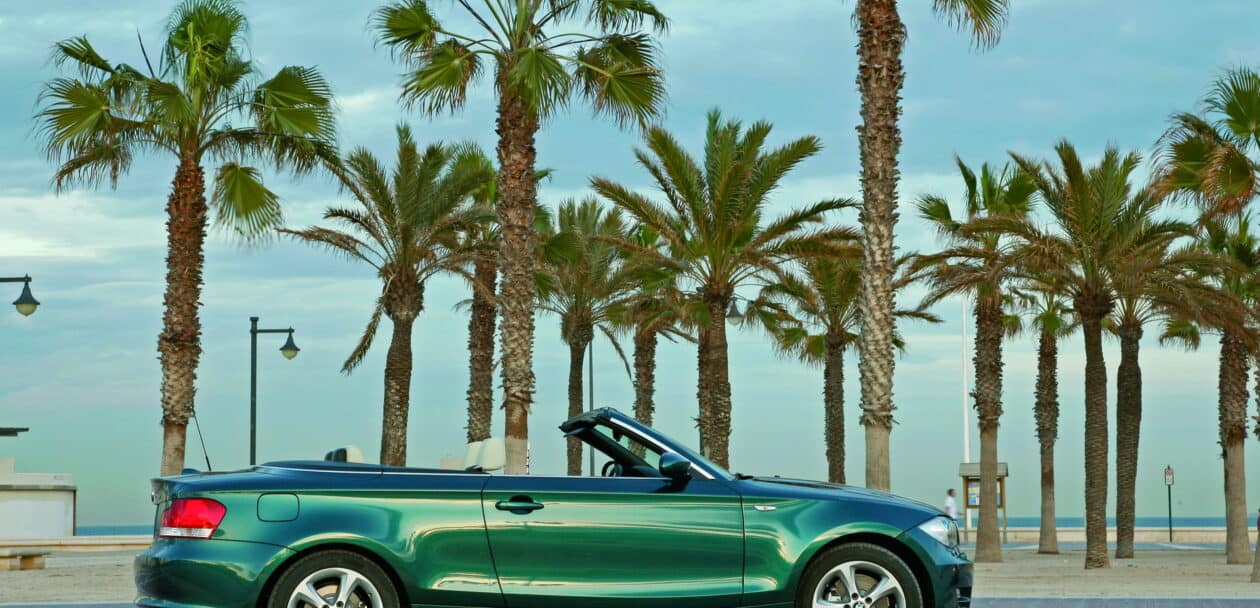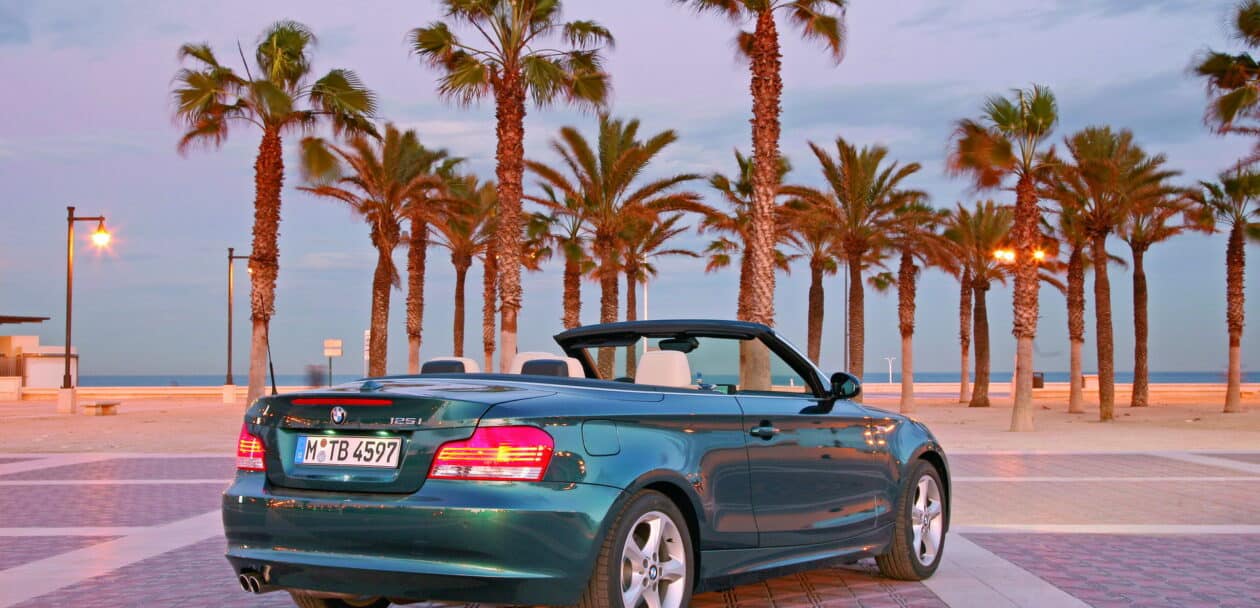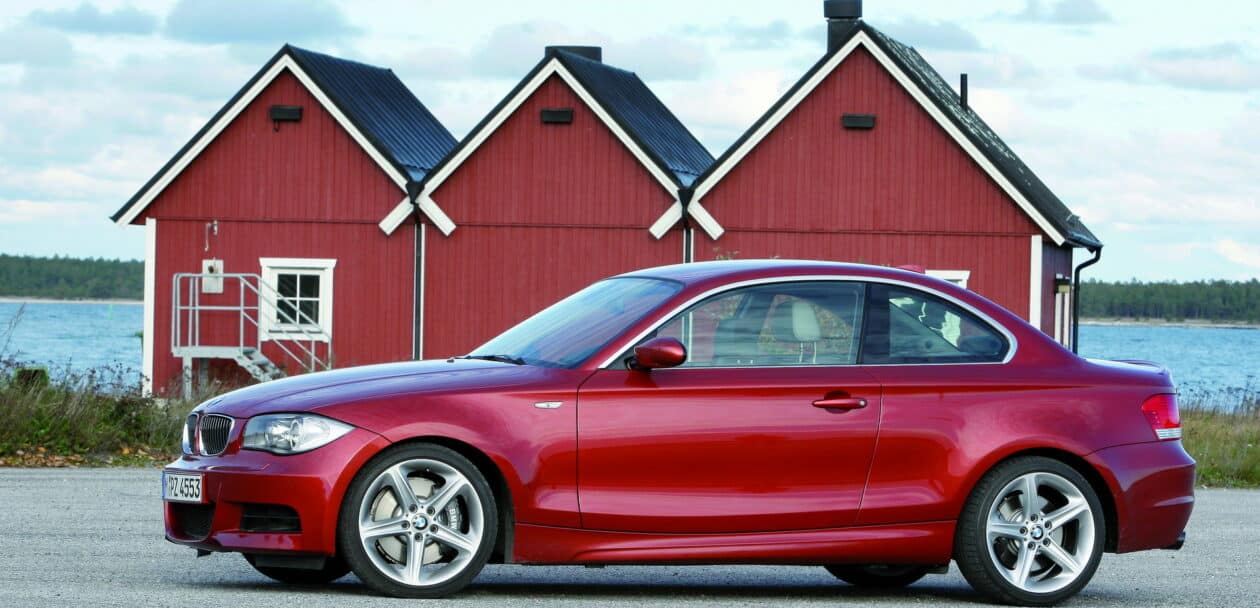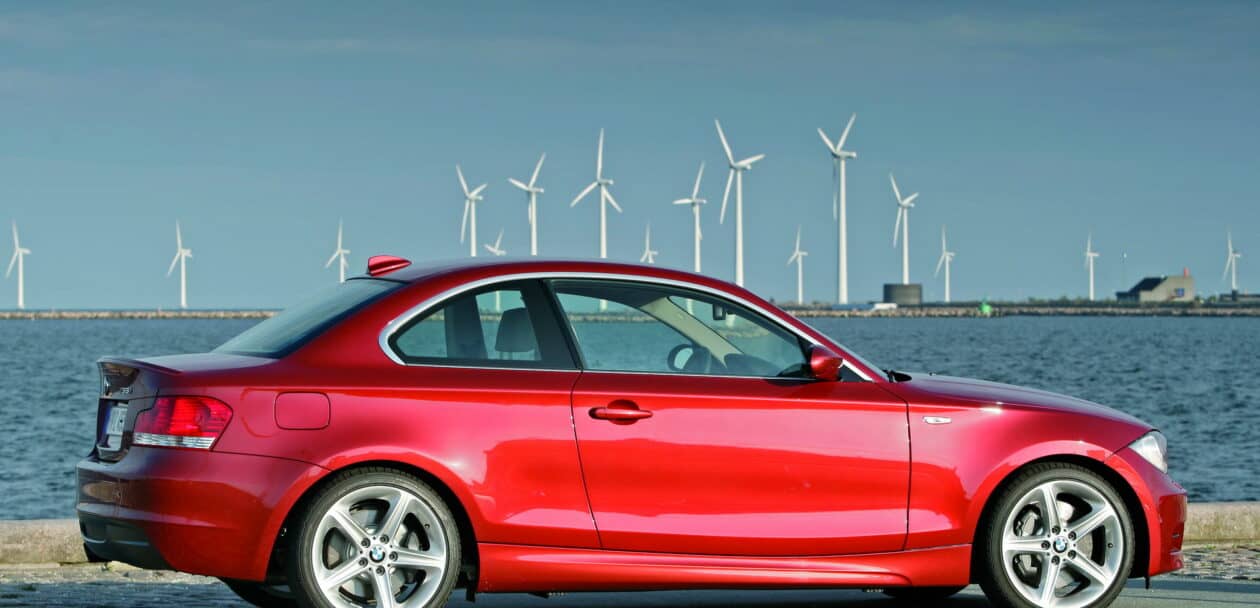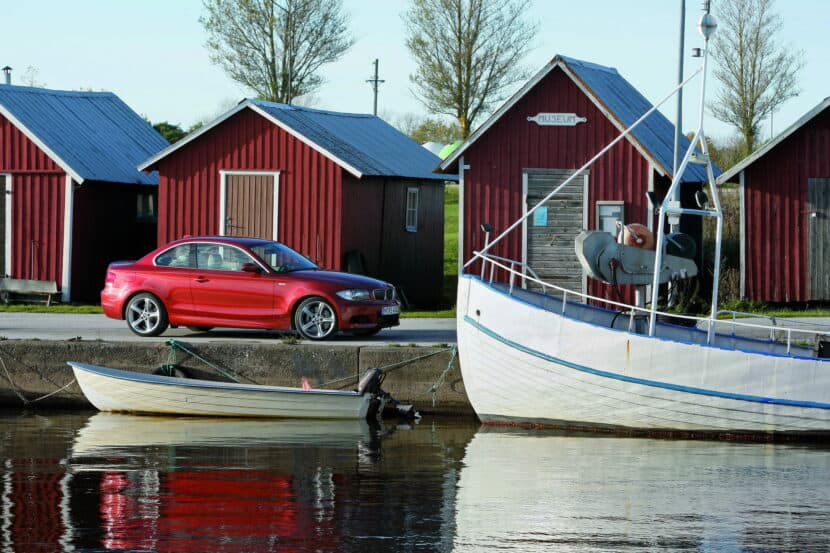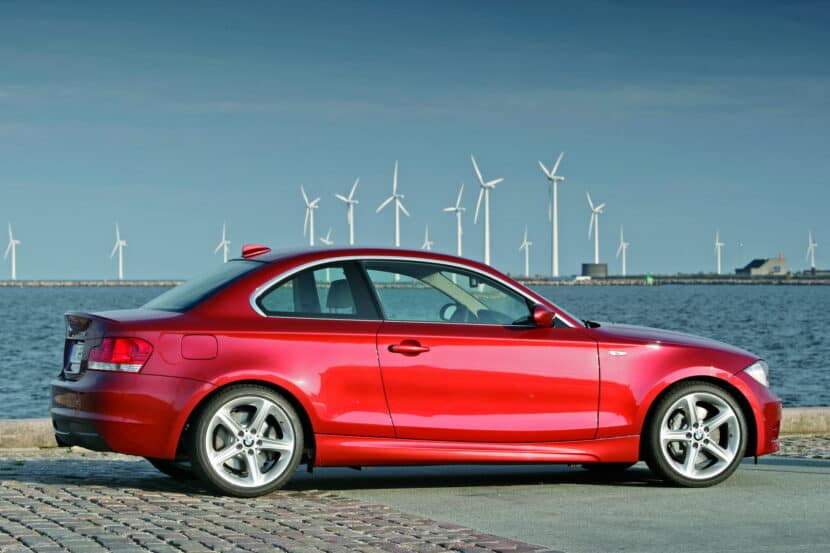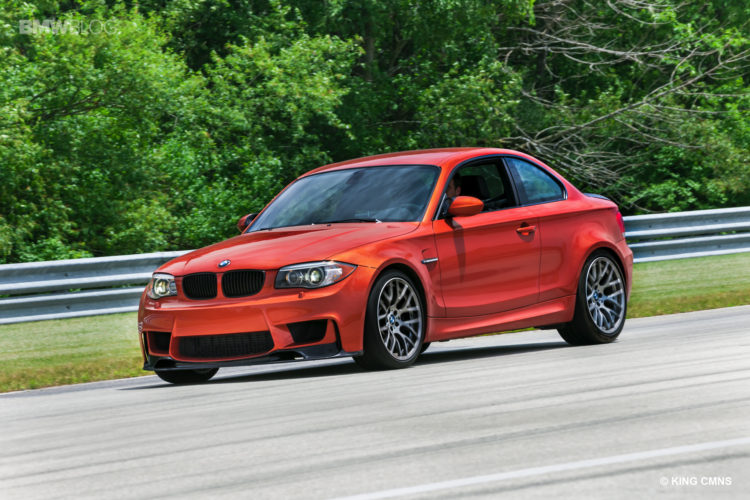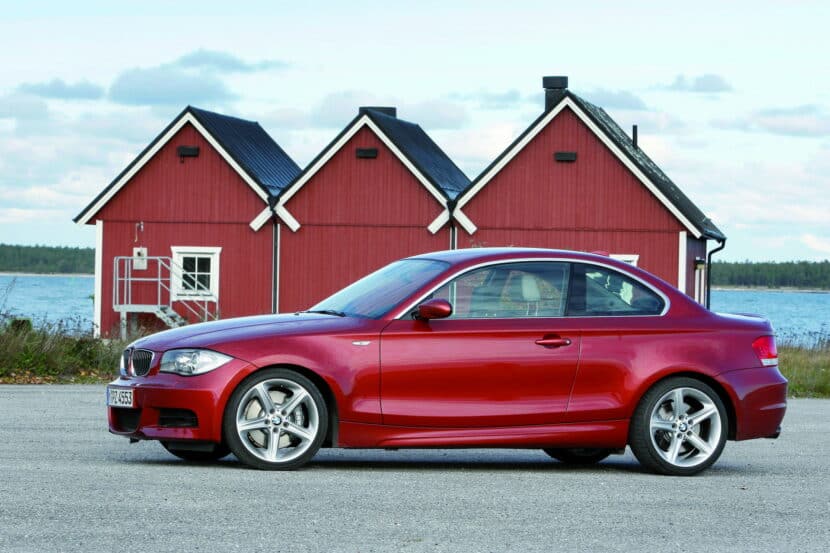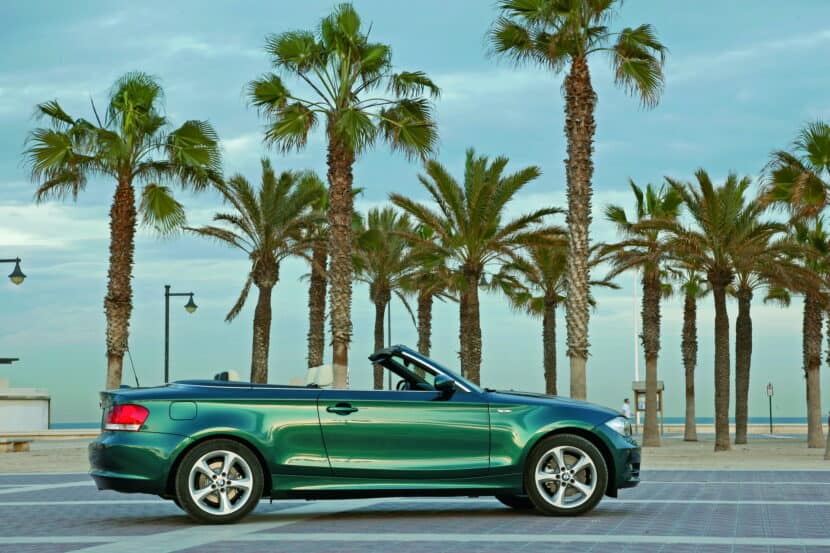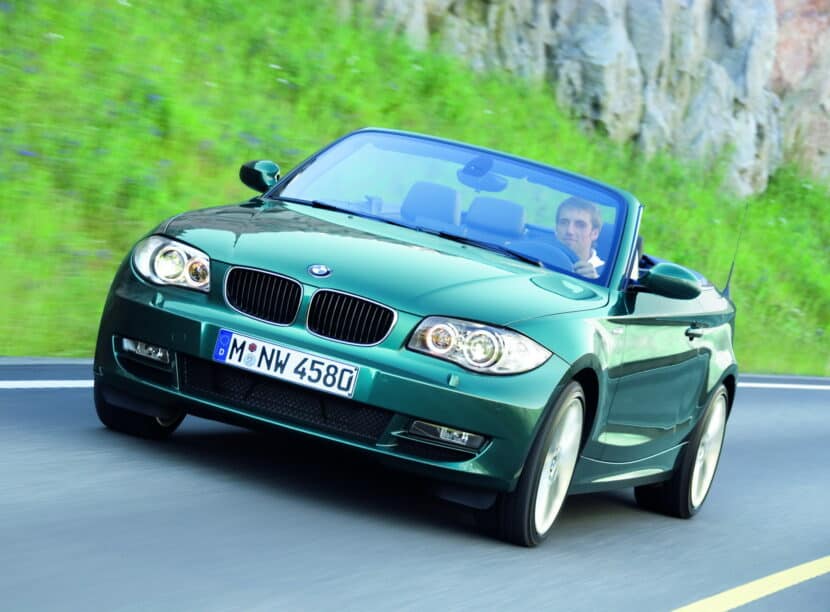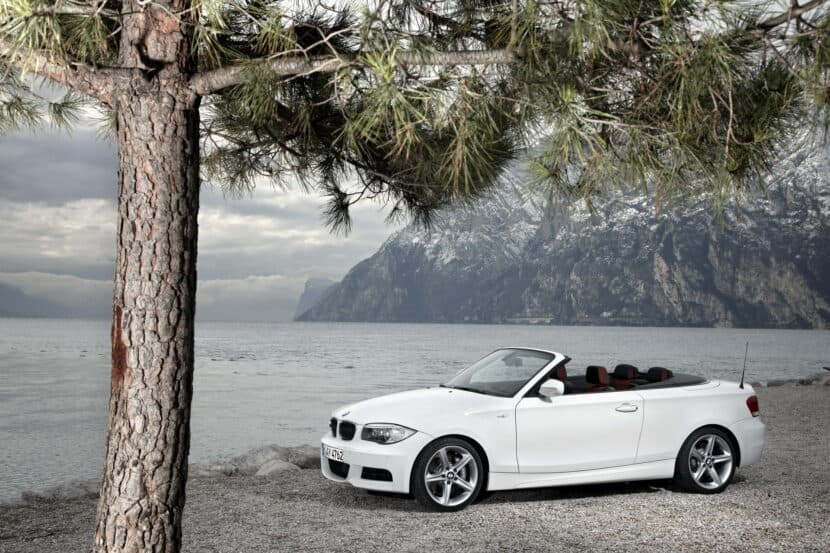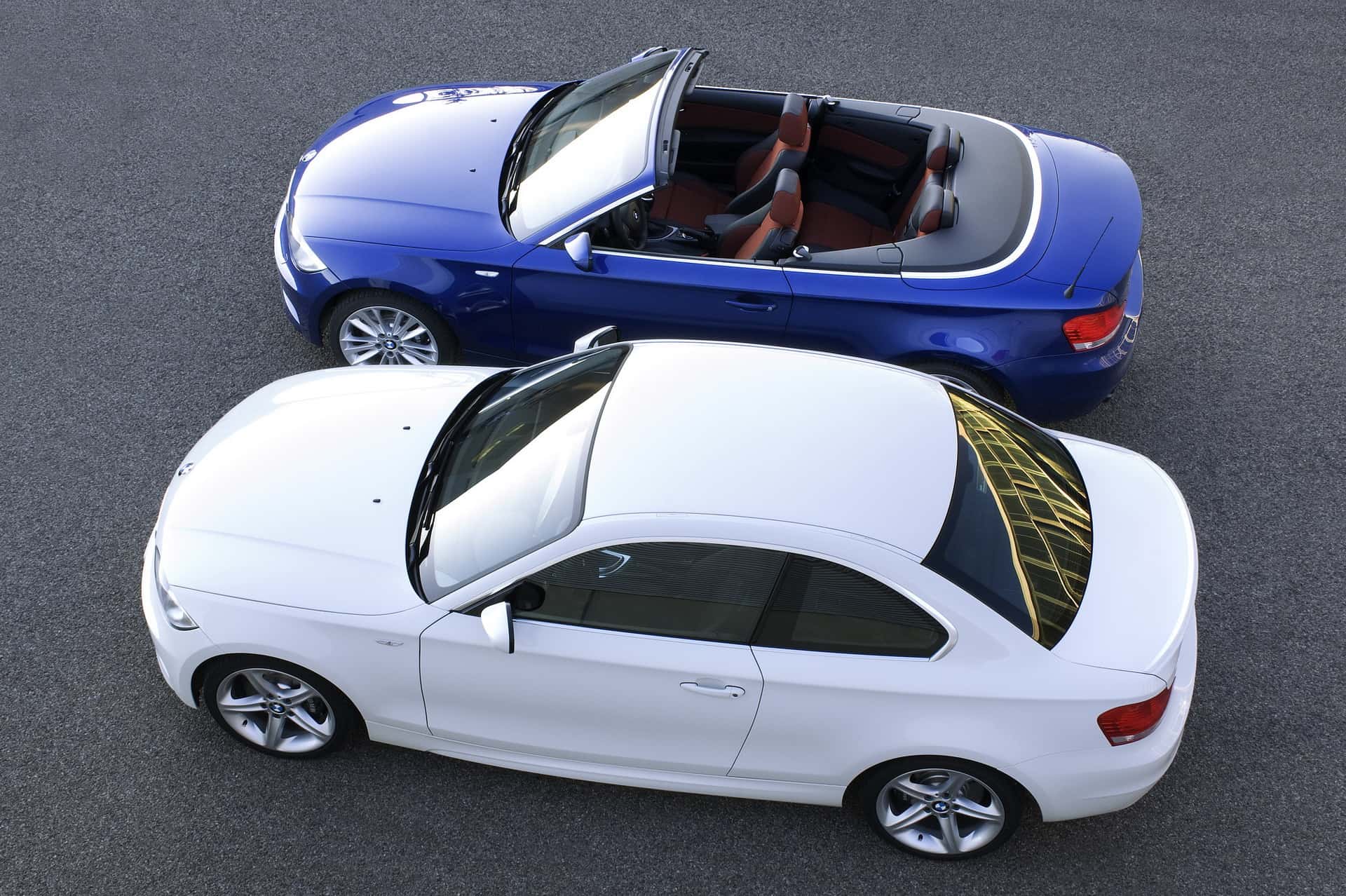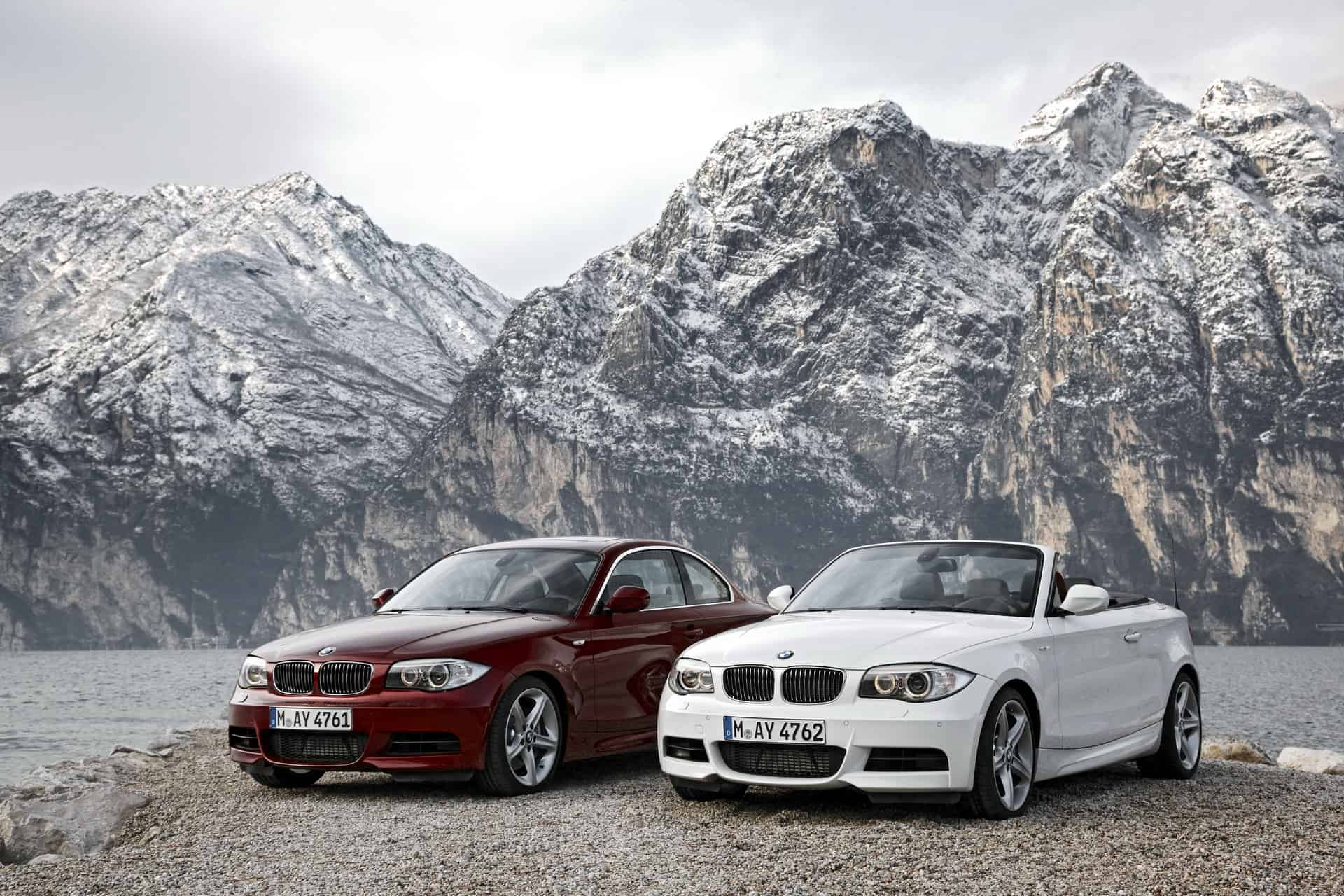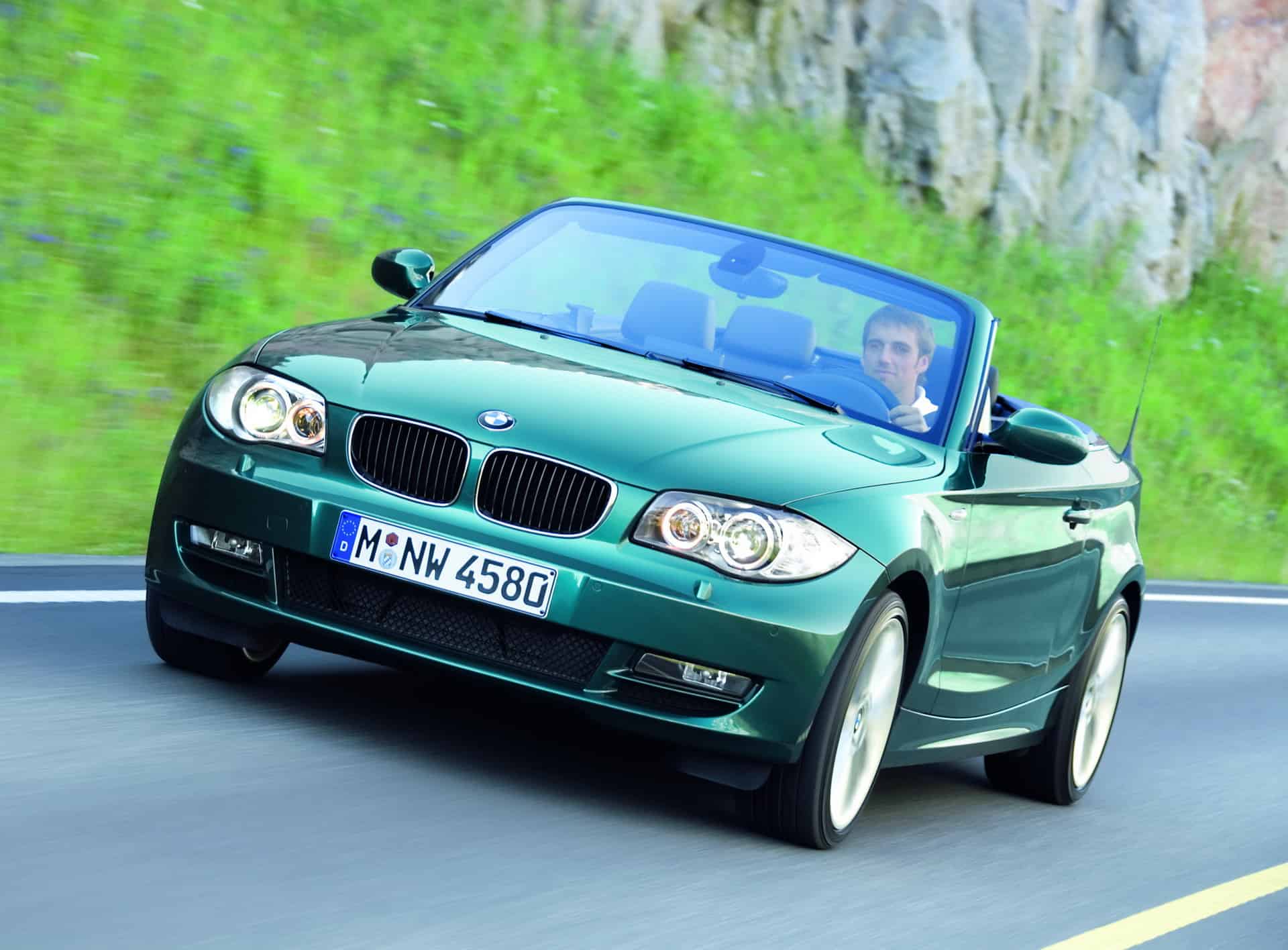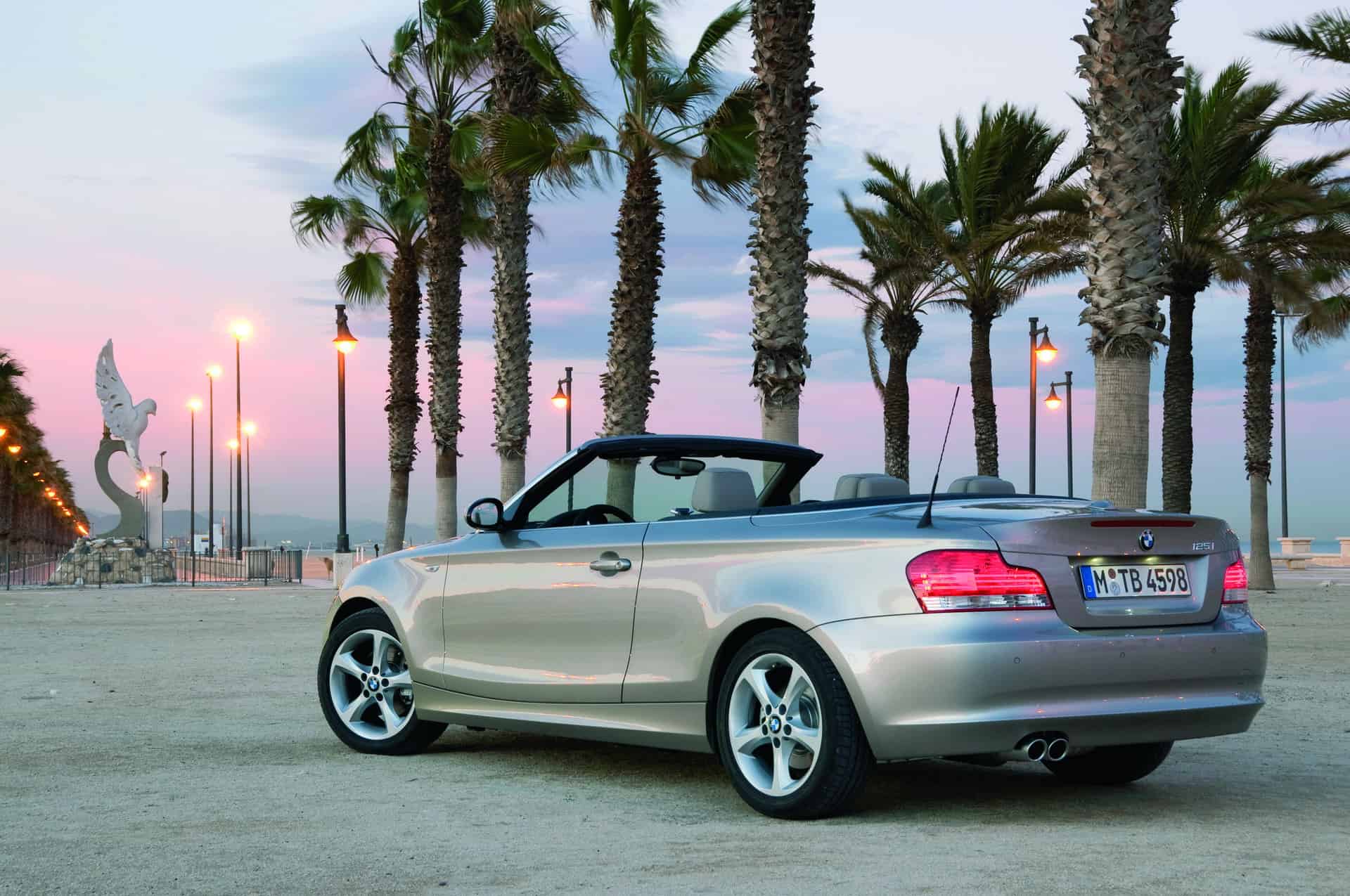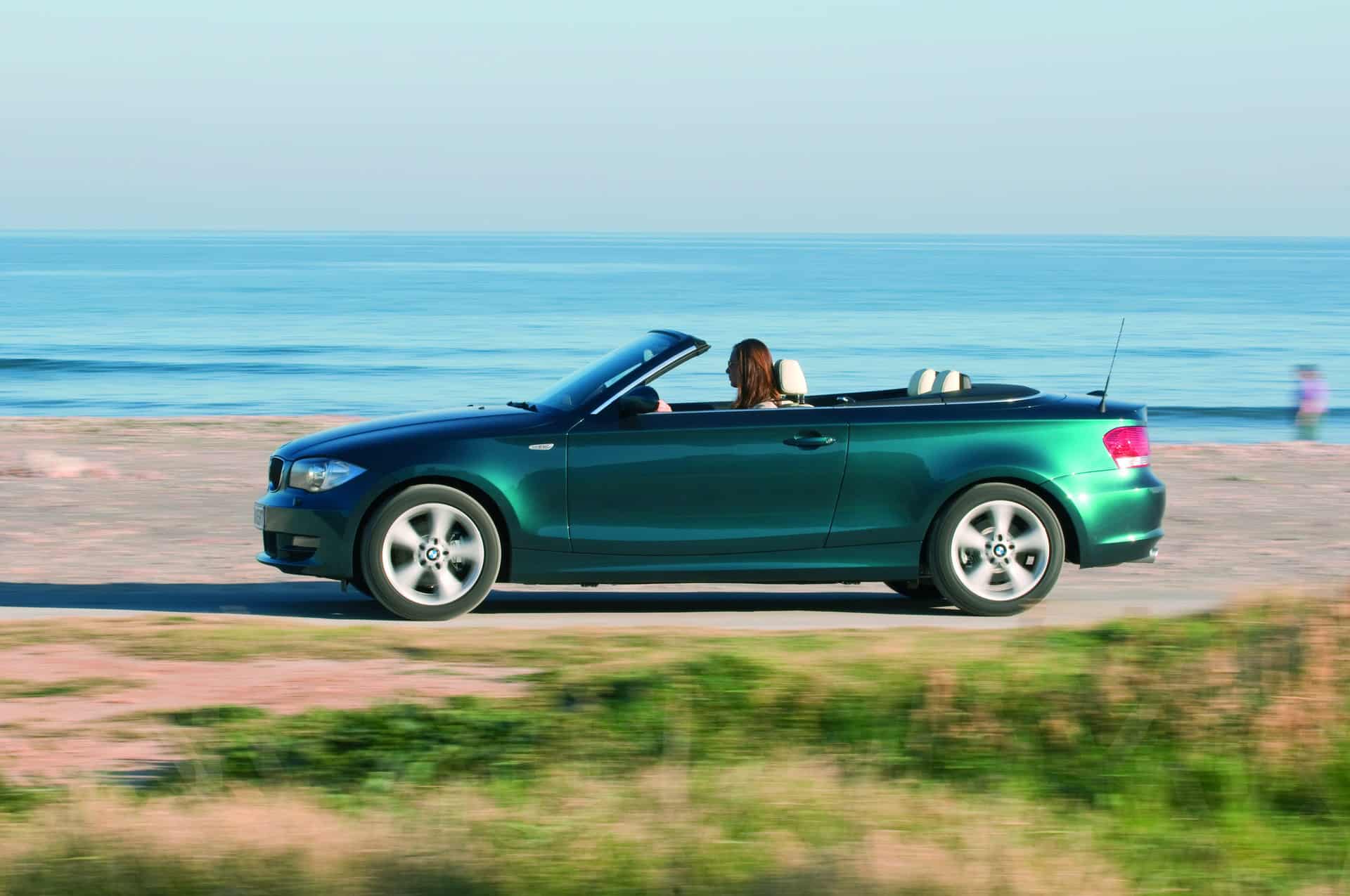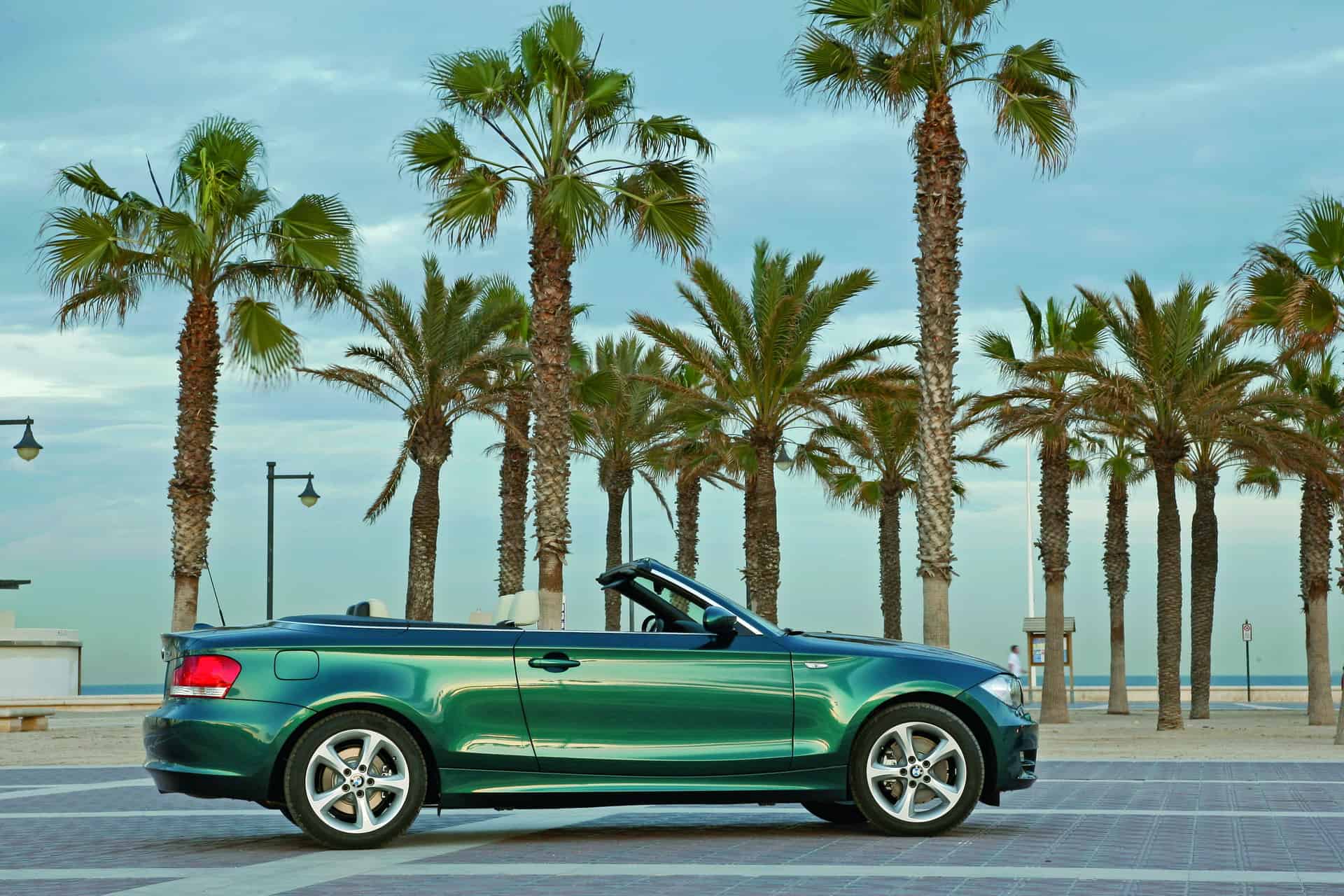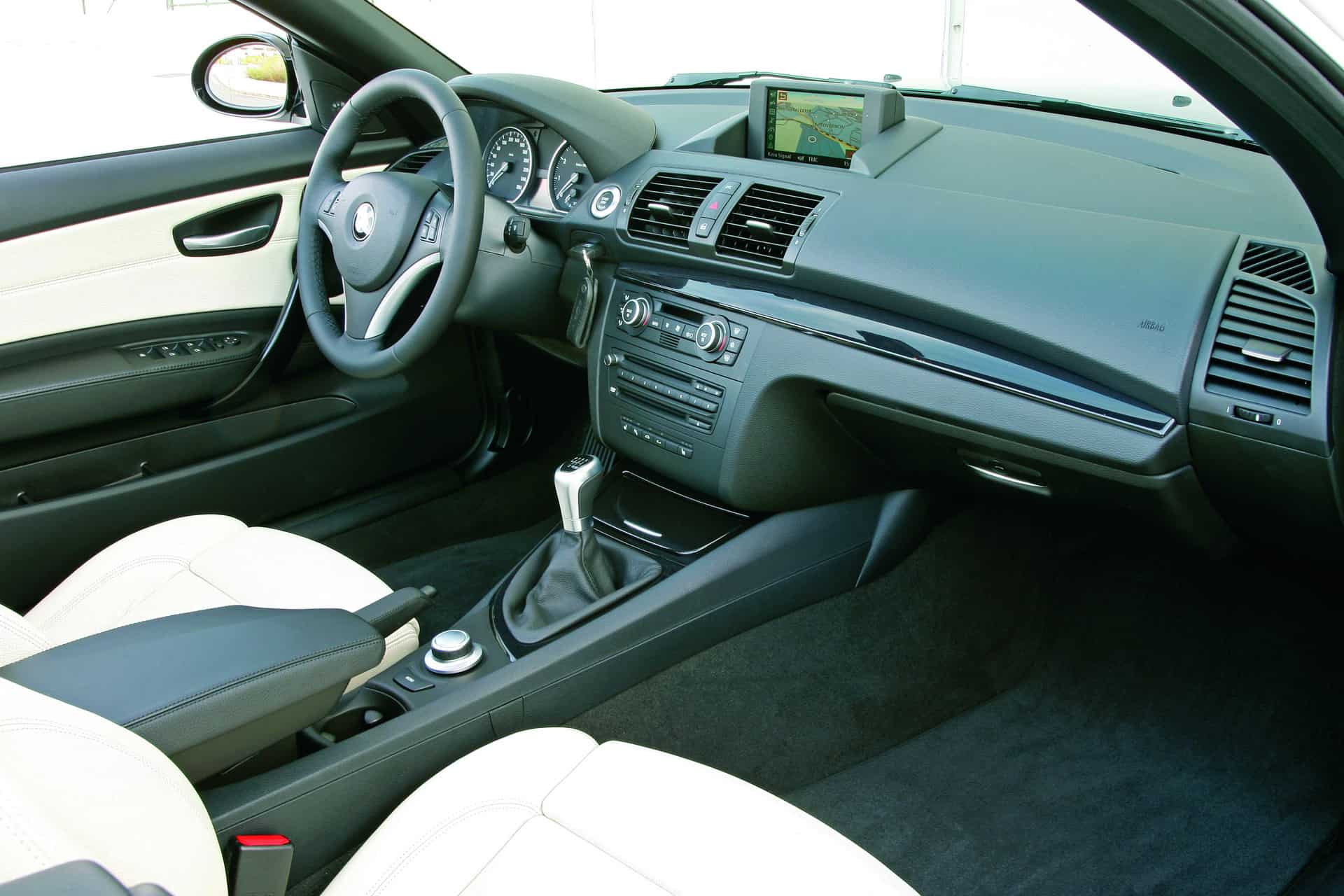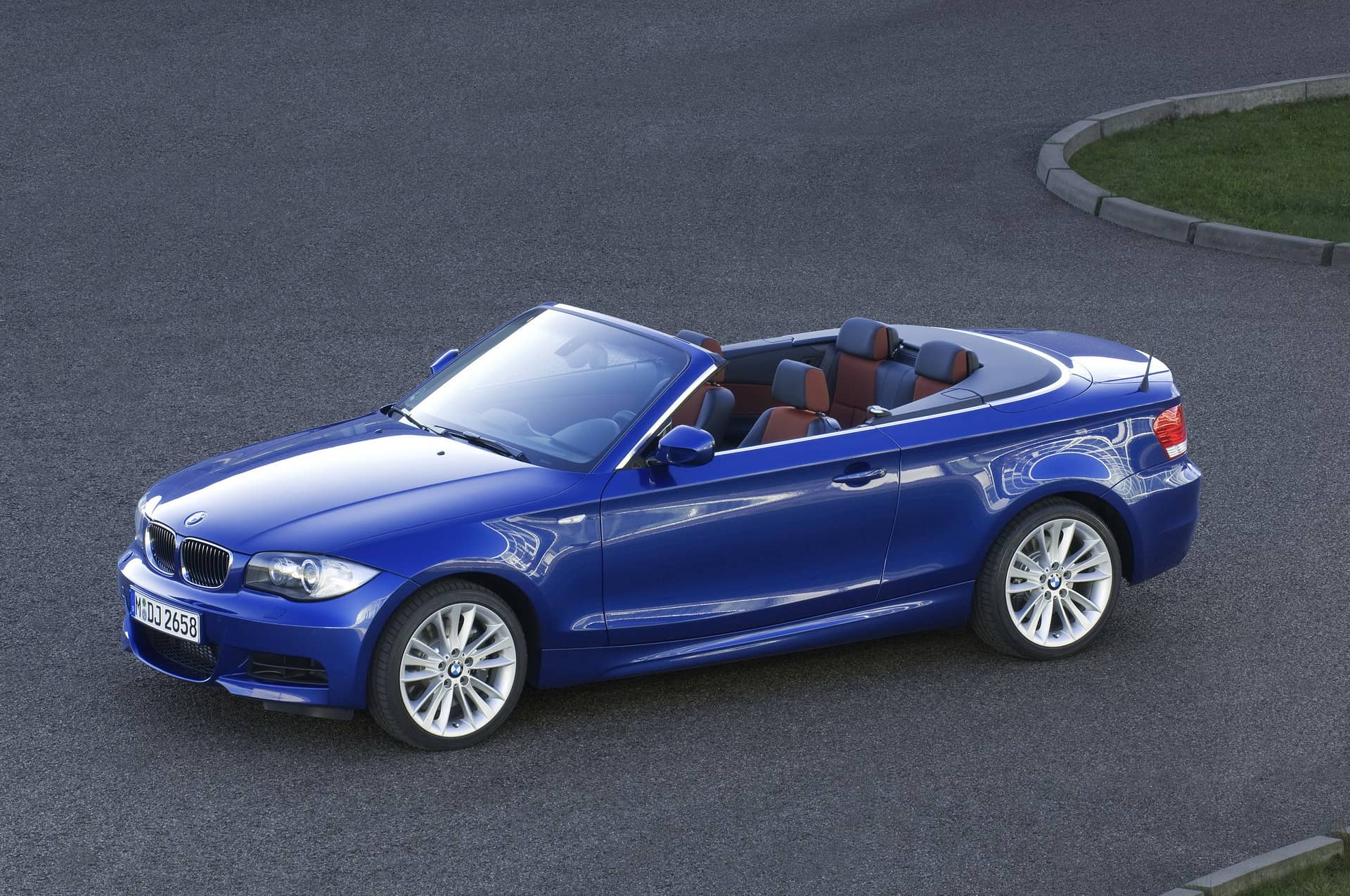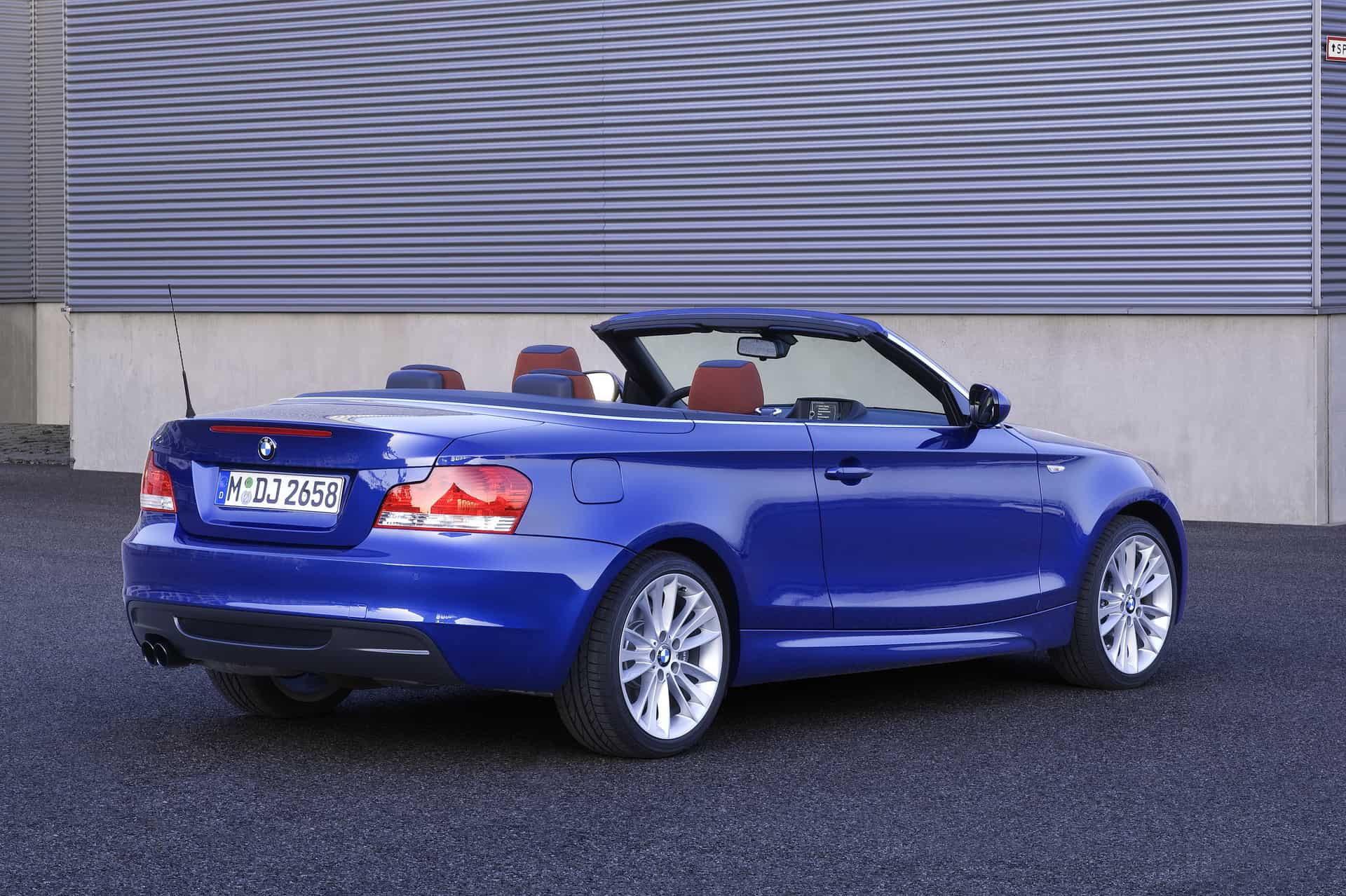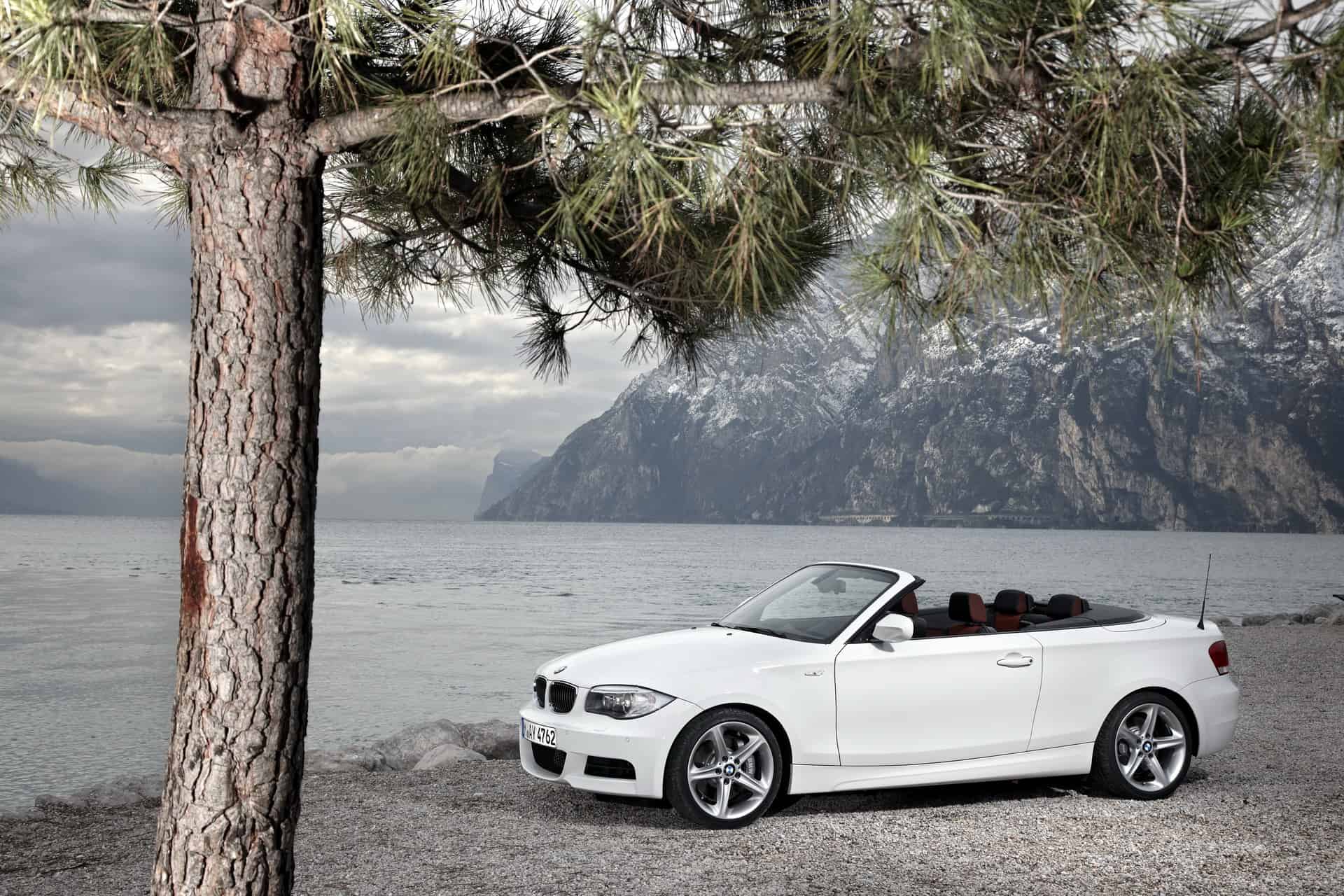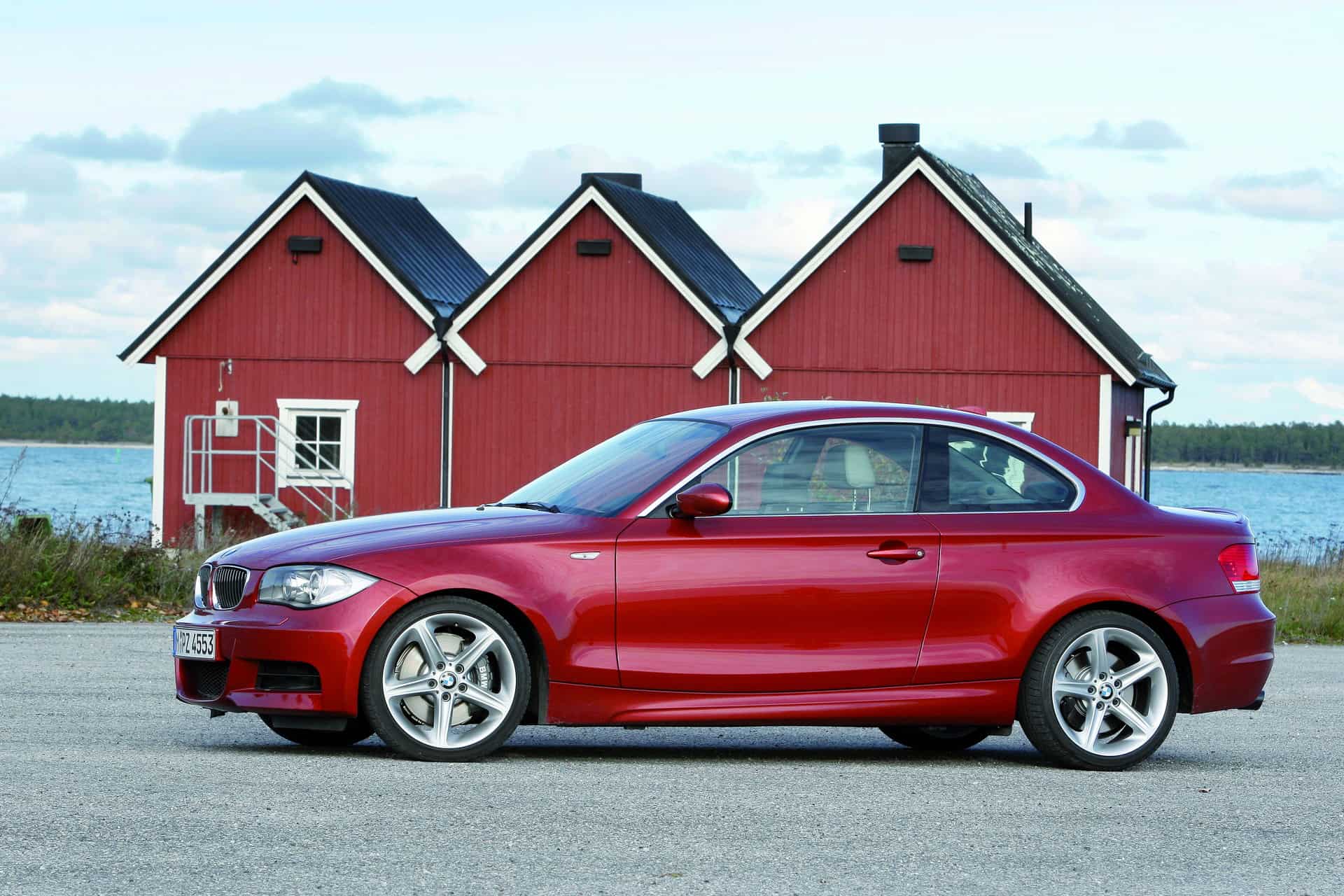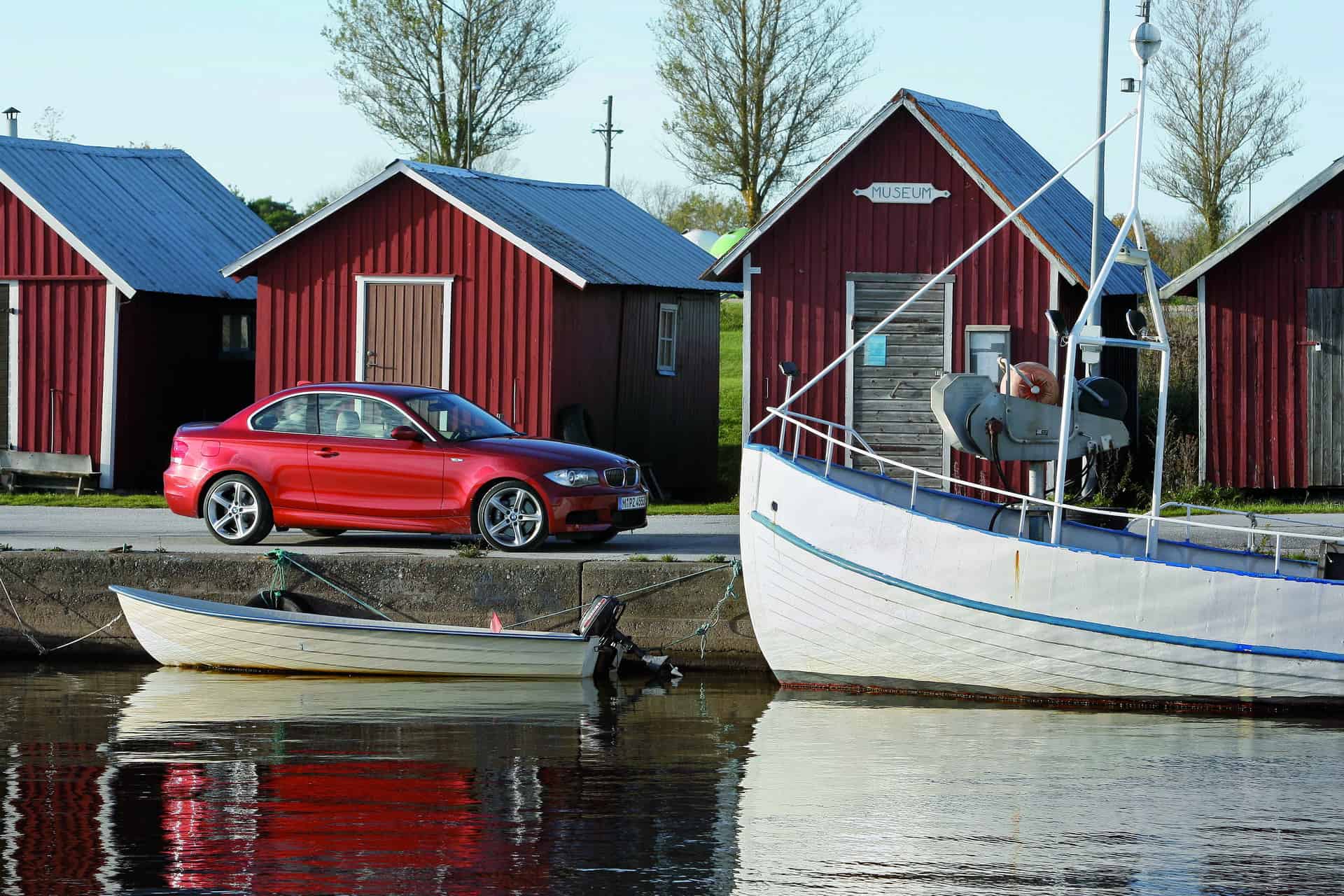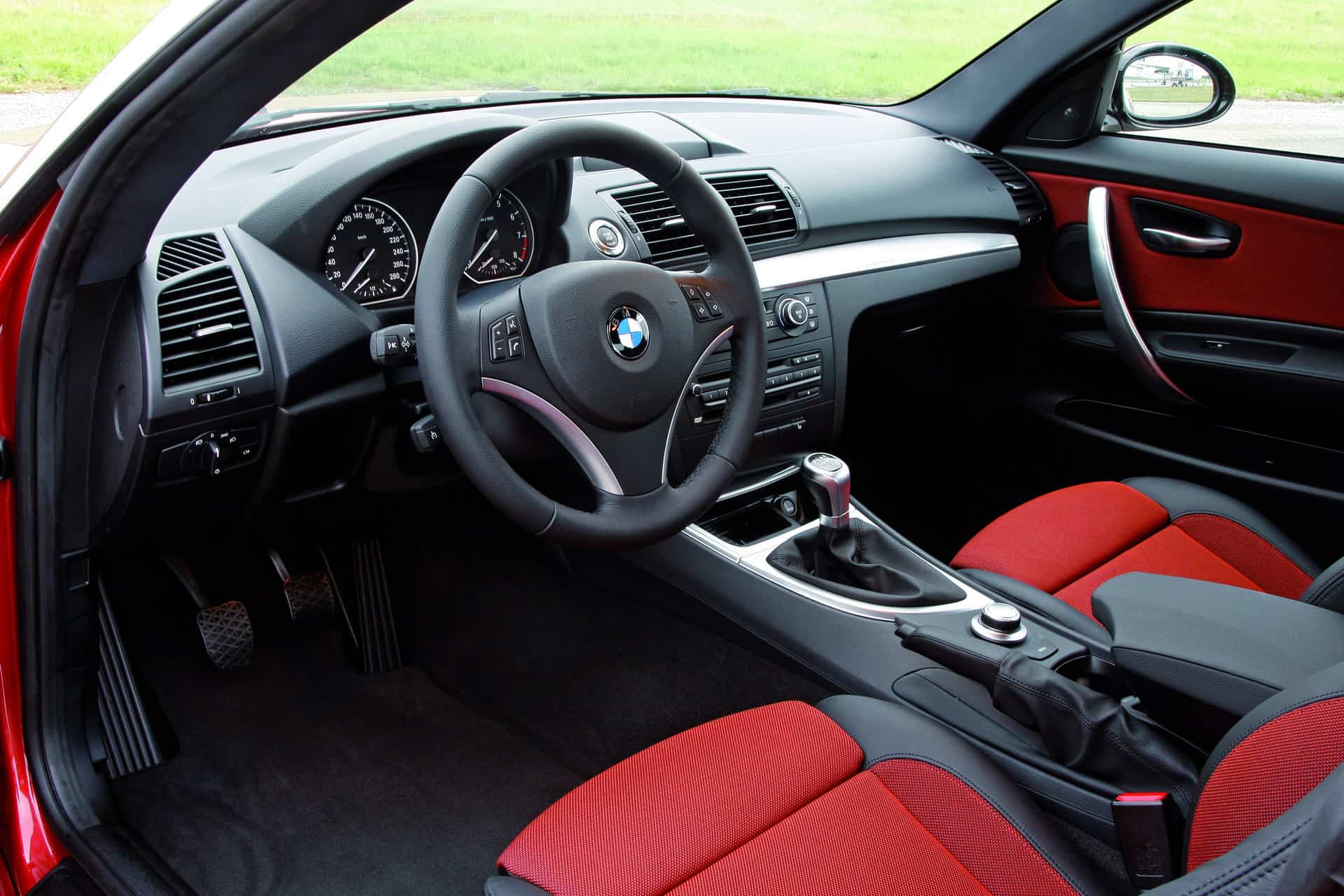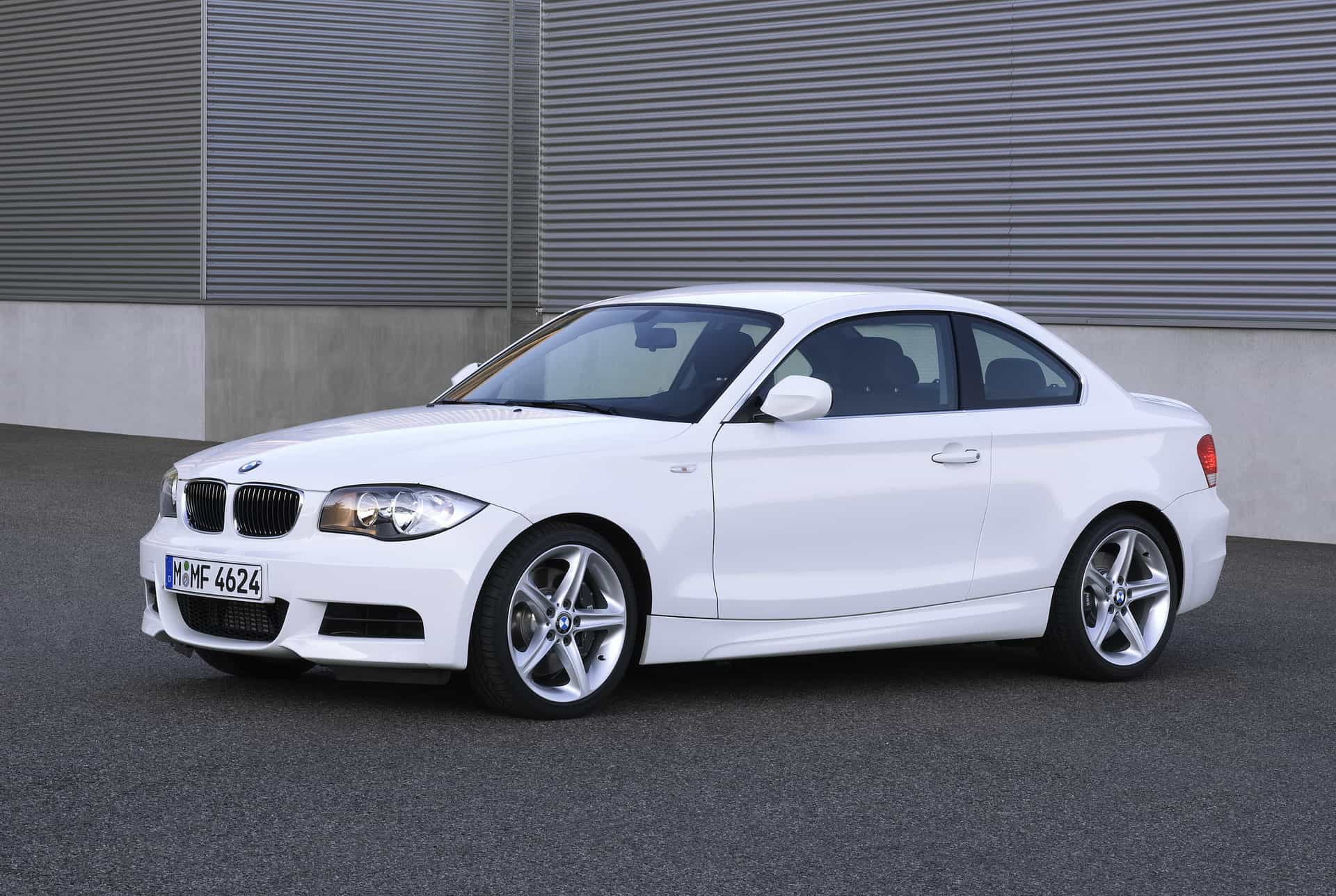The first generation BMW 1 Series arrived in 2004 and opened up a new segment for BMW. Apart from the 3-door and 5-door variants, it also spawned the unique E82 Coupe and E88 Convertible models. Today, these remain a one-off as they were eventually replaced by the 2 Series.
The design of the 1 Series pioneer models was conceived under the guidance of Christopher Chapman, during the infamous “Bangle Era” when new BMWs embraced a highly controversial styling philosophy.
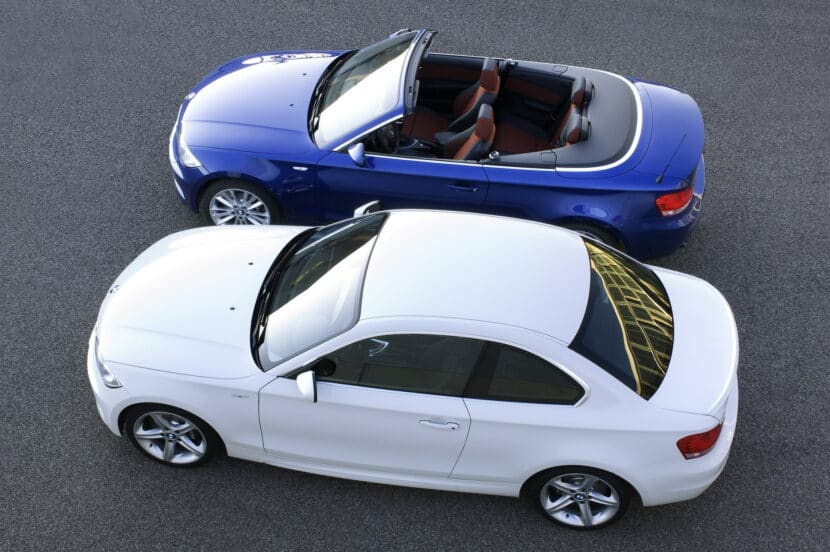
The BMW 1 Series Coupe and Convertible exhibited a highly dynamic silhouette, with typical RWD proportions and a lot of flame surfacing going on around. The stance of the E82 and E88 models was imposing even for a compact car, with aggressively styled headlights and a lot of intricate, sharp design cues.
The E82 1 Series: Building on a rich coupe heritage
The first-ever 1 Series Coupe (internally codenamed E82) was officially premiered at the IAA Frankfurt 2007. Due to its size and warm reception by the public, it is frequently considered to be a true successor of the classic E30 3 Series 2-door coupe of the ’80s era.
As BMW reiterated in the official press release for the E82 series, “The new BMW 1 Series Coupé concentrates on one feature in particular: pure driving pleasure.” The 2-door compact was a properly developed BMW, exuding a pure-bred sports character and boasting a dynamic powertrain.
The 1 Series Coupe featured a distinct 2+2 seat architecture, with clearly defined body volumes and muscular proportions that highlighted the car’s natural elegance. Even though the E82 belonged to the compact class, the engine bay was generous enough to house a straight-six petrol engine.
The range-topping 135i Coupe included a standard M Aerodynamic package and was powered by a 3.0-liter, 6-cylinder petrol engine developing 225 kW / 306 PS (302 hp). The N54B30 powerplant, as it was codenamed, featured Twin Turbo technology and High Precision Injection.
The engine also received the coveted International Engine Of The Year 2007 award. It developed a peak torque of 400 Nm (295 lb-ft) and rendered the 135i Coupe a forceful acceleration from 0 to 100 km/h in just 5.3 seconds.
Other power versions included the highly efficient 123d Coupe and 120d Coupe versions. Both were equipped with the same N47D20 Variable Twin Turbo diesel engine in different output stages and featured extensive BMW EfficientDynamics measures. The 123d variant boasted a peak output of 155 kW / 204 PS (201 hp), whereas the more frugal 120d was rated at 130 kW / 177 PS (174 hp).
It gave birth to one of the best M cars ever made
BMW kept the 1 Series Coupe as classic as possible, as power was sent exclusively to the rear-axle wheels, with no xDrive choice available as an option. The E82 series also spawned the 1 Series M Coupe high-performance model (F82M), which was underpinned by a modified M chassis and featured an enhanced N54 engine.
The 6-cylinder powerplant with M TwinPower Turbo developed 250 kW / 340 PS (335 hp) and a peak torque of 450 Nm (332 lb-ft). The 1 Series M Coupe accelerated from standstill to 100 km/h in just 4.9 seconds. The power was sent to the back wheels via a 6-speed manual gearbox.
Furthermore, as part of BMW Group’s Project i, the 2-door 1 Series was also the basis of the BMW ActiveE prototype. The electric 1 Series Coupe appeared in 2012 and was used for mass trial testing program in the United States, China and Europe, boasting a total range of 151 kilometers (94 miles, as calculated by EPA).
In 2011, the E82 1 Series received the well-deserved LCI treatment, which included some subtle visual changes to the car’ exterior styling and some important updates in terms of powertrain and technology. The N54 unit powering the pre-LCI 135i Coupe was replaced by the newer N55 engine. In August 2013, production of the first-and-last ever 1 Series Coupe ceased, as the all-new 2 Series Coupe (F22) got unveiled.
The E88 1 Series: A breath of fresh air in the compact class
The 1 Series Convertible was officially premiered at the Geneva Motor Show in March 2008. Built on the same architecture as the F82, the car redefined the concept of open-air driving pleasure in the compact class.
The 1 Series Convertible was distinguished thanks to its refined exterior styling, which comprised the powerful, straight shoulder line, the muscular wheel arches and the overall balanced, svelte silhouette.
The F88 was also available with a striking and very rare BMW paintwork: the Tahiti Green metallic, which was one of the 2008 launch colors for the series.
Offered exclusively with rear-drive traction, the 1 Series Convertible was equipped with a classic soft-top, which was the ideal solutions that saved important kilograms and cargo space in the boot. Folding and unfolding operation took around 22 seconds and could be done at speeds of up to 50 km/h.
To further improve the level of safety, the body of the E88 1 Series had been significantly reinforced, which meant an additional 115 kg over the Coupe version in terms of kerb weight. Other solutions included the rollover protection with rollbars placed behind the rear headrests as well as crash-optimized front seat backrests and headrests.
The engine lineup comprised both diesel and petrol engine, with slight changes compared to the 1 Series Coupe. Thus, the Convertible came in the following versions:
- 118i, with a 4-cylinder petrol unit rated at 105 kW / 143 PS equipped with High Precision Injection
- 120d, with a turbocharged diesel engine making up 130 kW / 177 PS
- 120i, with 125 kW / 170 PS
- 125i, with a 6-cylinder, 3.0-liter petrol engine equipped with Double VANOS and VALVETRONIC, rated at 160 kW / 218 PS (composite magnesium/aluminum crankcase)
- The range-topping 135i, with the 2,979 cc, I6 Twin Turbo petrol engine with High Precision Injection, boasting 225 kW / 306 PS
As you already know, no M variant was offered for the 1 Series Convertible. Like in the case of the E82 model, the E88 open-top also received the LCI refreshment in 2011, which meant a sharper styling, new infotainment technology (BMW CIC) and more efficient powertrains. The one-and-only 1 Series Convertible marched on until June 2013, when production officially ended.
Should I Buy One?
The BMW 1 Series, either in coupe or convertible form, is arguably one of the best driving cars of the last decade. It’s also shaping up to be a future classic, considering how rare they are on the road today. But not only because of that – the 1 Series is truly a gem today in an automotive world dominated by large and bloated cars.
Furthermore, the 1 Series was offered with an extensive range of engines, as well as the highly coveted manual transmission. But as most modern cars, it also has its faults – The most important one being the N54 engine. While the TwinTurbo 3.0 liter has great potential for tuning, and impressive power delivery across the entire rpm range, it also has some issues.
In the United States, some N54 engines experienced failures of the High Pressure Fuel Pump (HPFP), resulting a class action lawsuit, a voluntary recall and an extended warranty for the HPFP. After BMW settled a lawsuit, they recalled nearly 130,000 cars and replaced the HPFP in about 40,000 of them.
On top of this, the warranty period for the HPFP was increased to 10 years and 120,000 mi (190,000 km). The warranty period for the fuel injectors was also increased, to 10 years or 120,000 mi (190,000 km). Due to problems with rattling wastegates caused by premature bushing wear, BMW extended the warranty period for wastegate-related issues to 8 years or 82,000 mi (132,000 km).
But the N54-powered models are still a small subset of the 1 Series family, so there are plenty of other engine choices. We often told people that it’s probably best to choose a 2011+ model with N55 single-turbo TwinScroll engine.
As always, we put together an extensive photo gallery showcasing the beauty of these 1 Series models:


